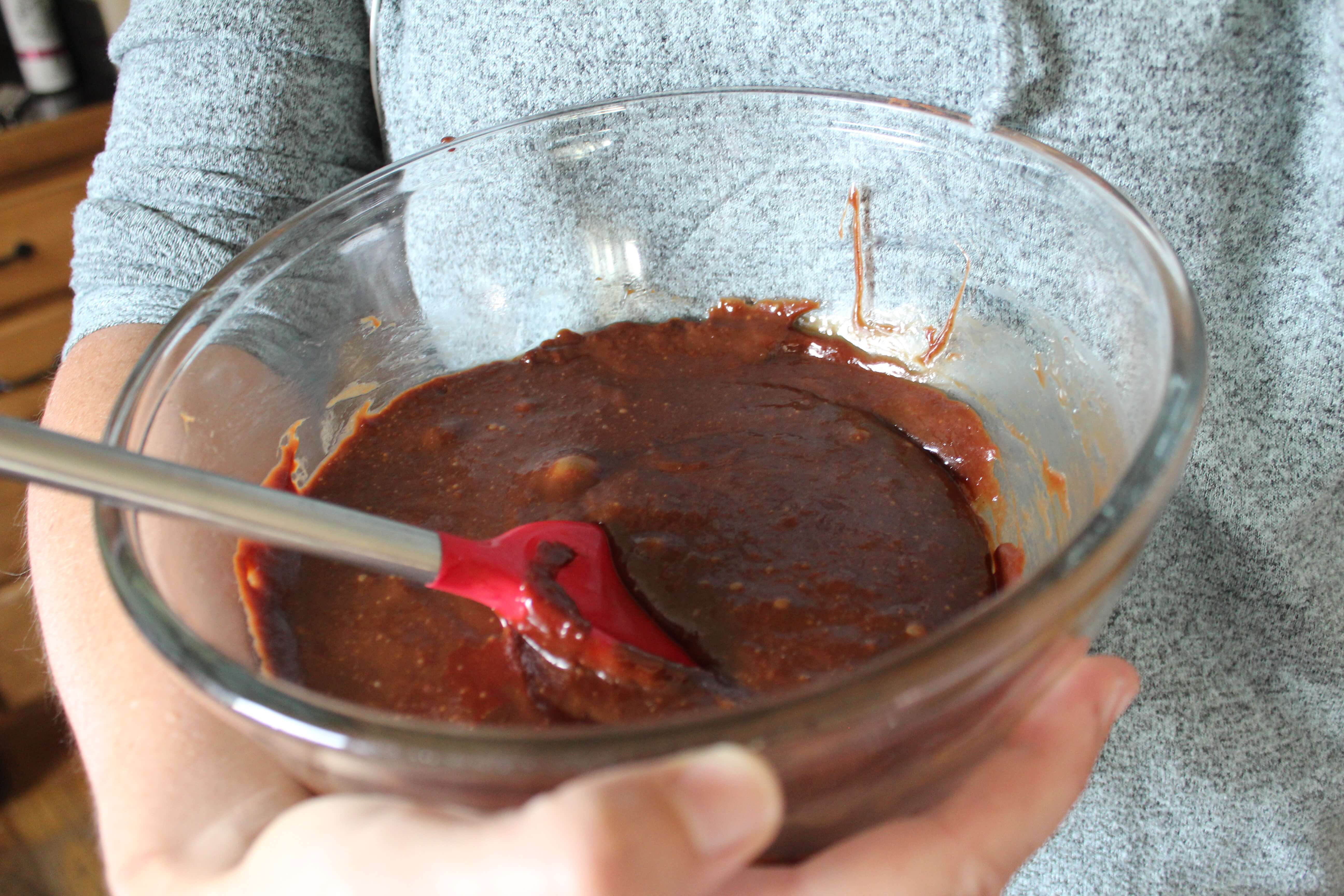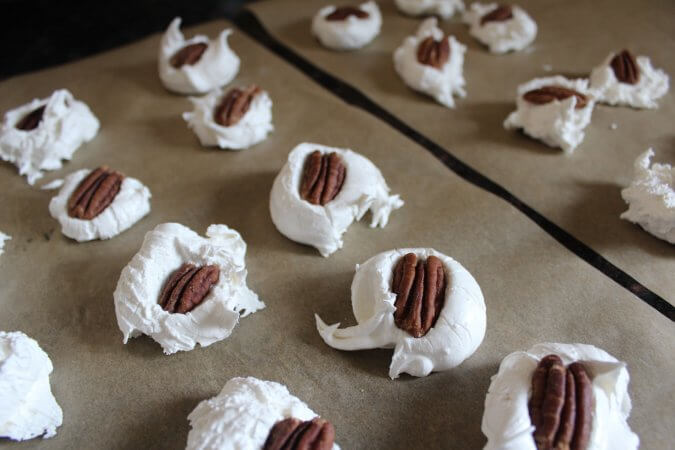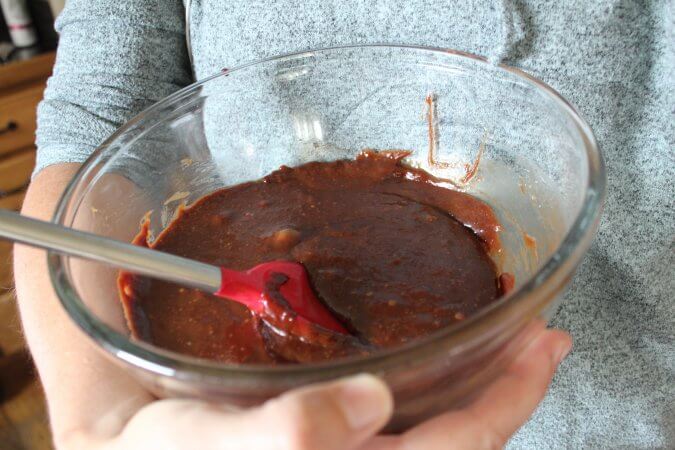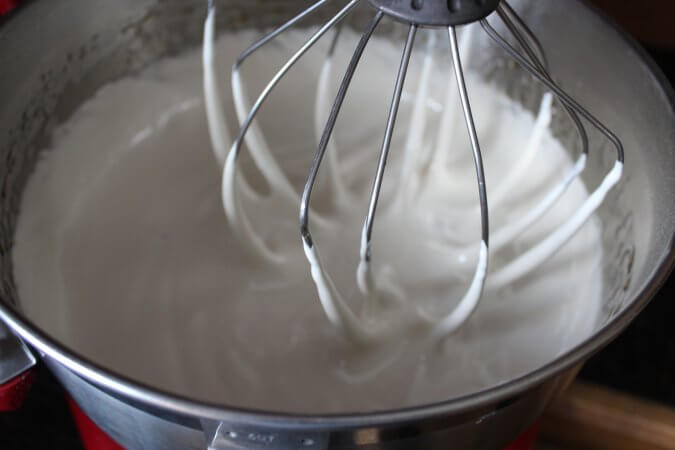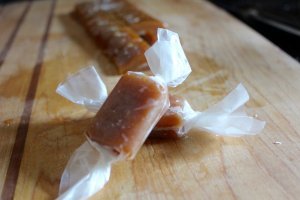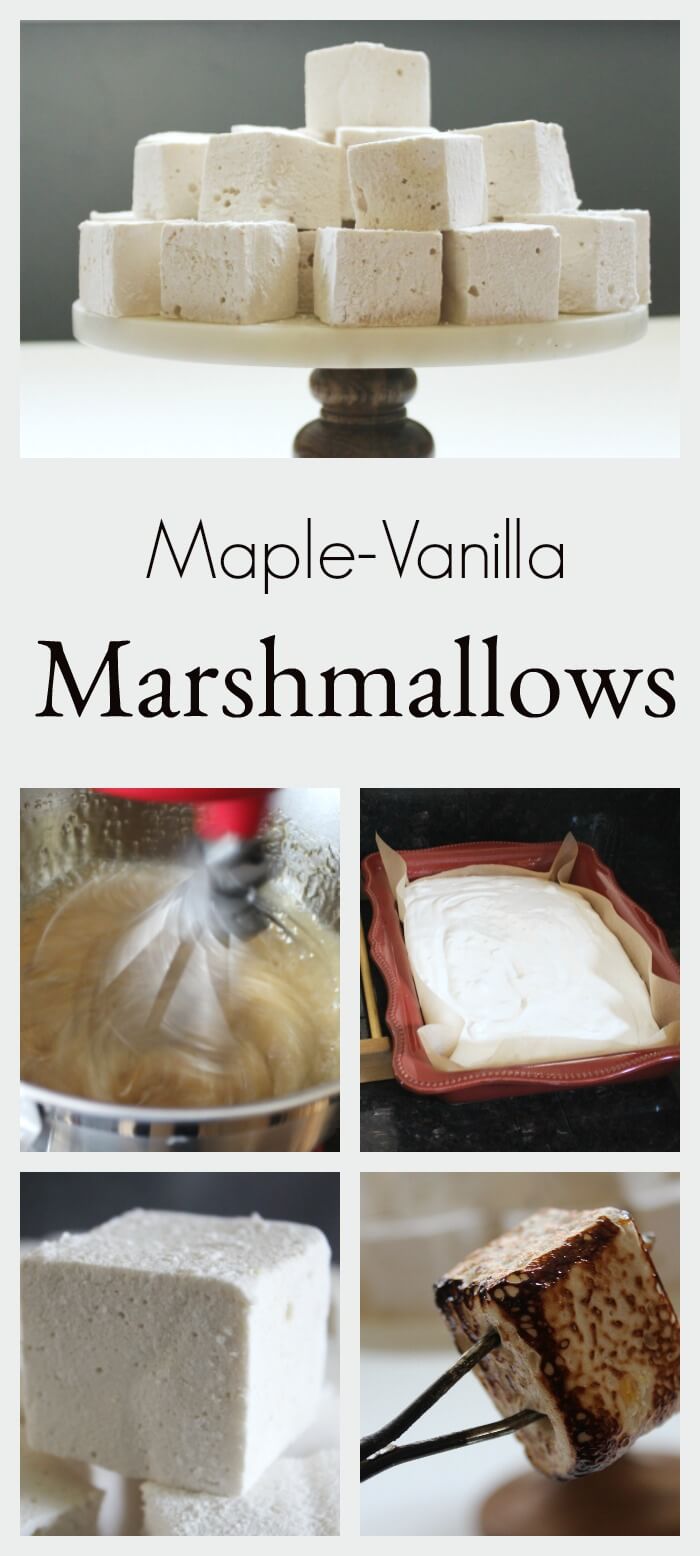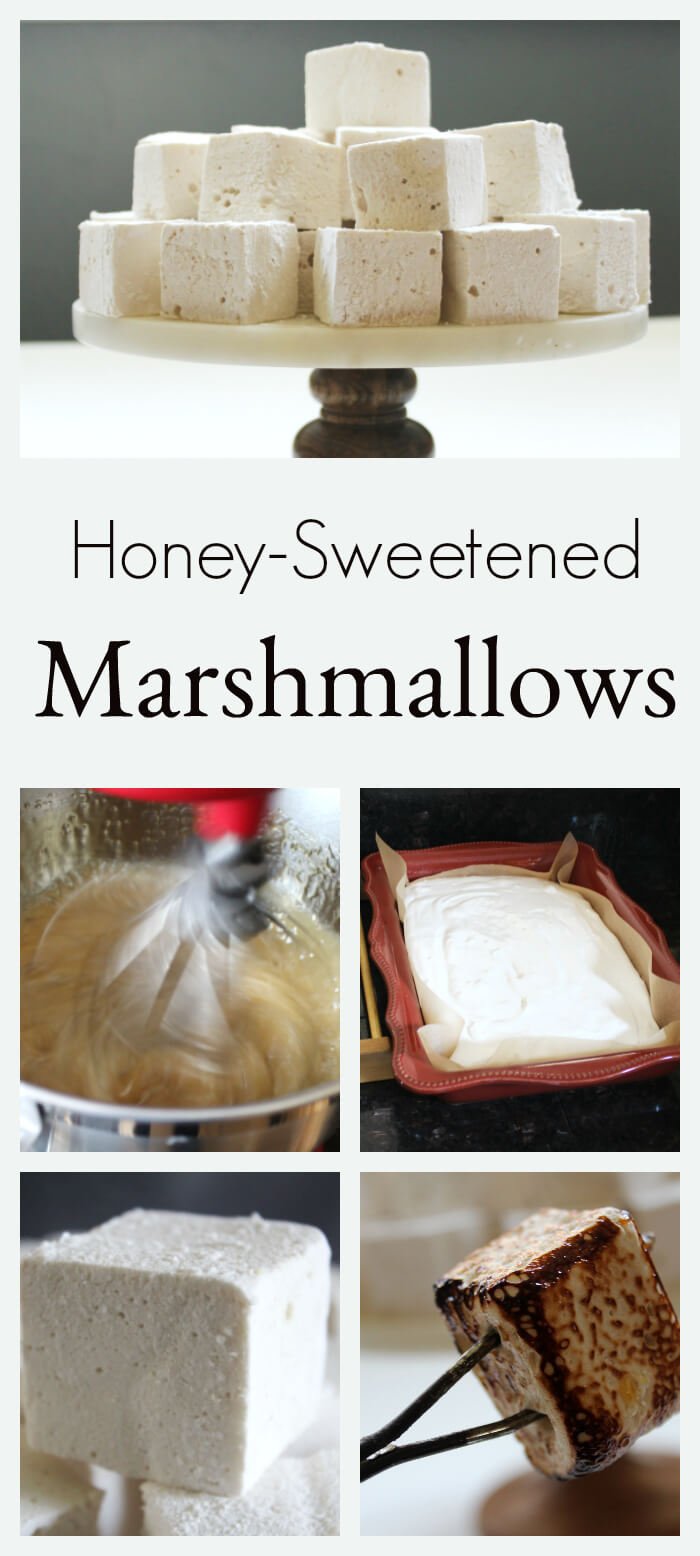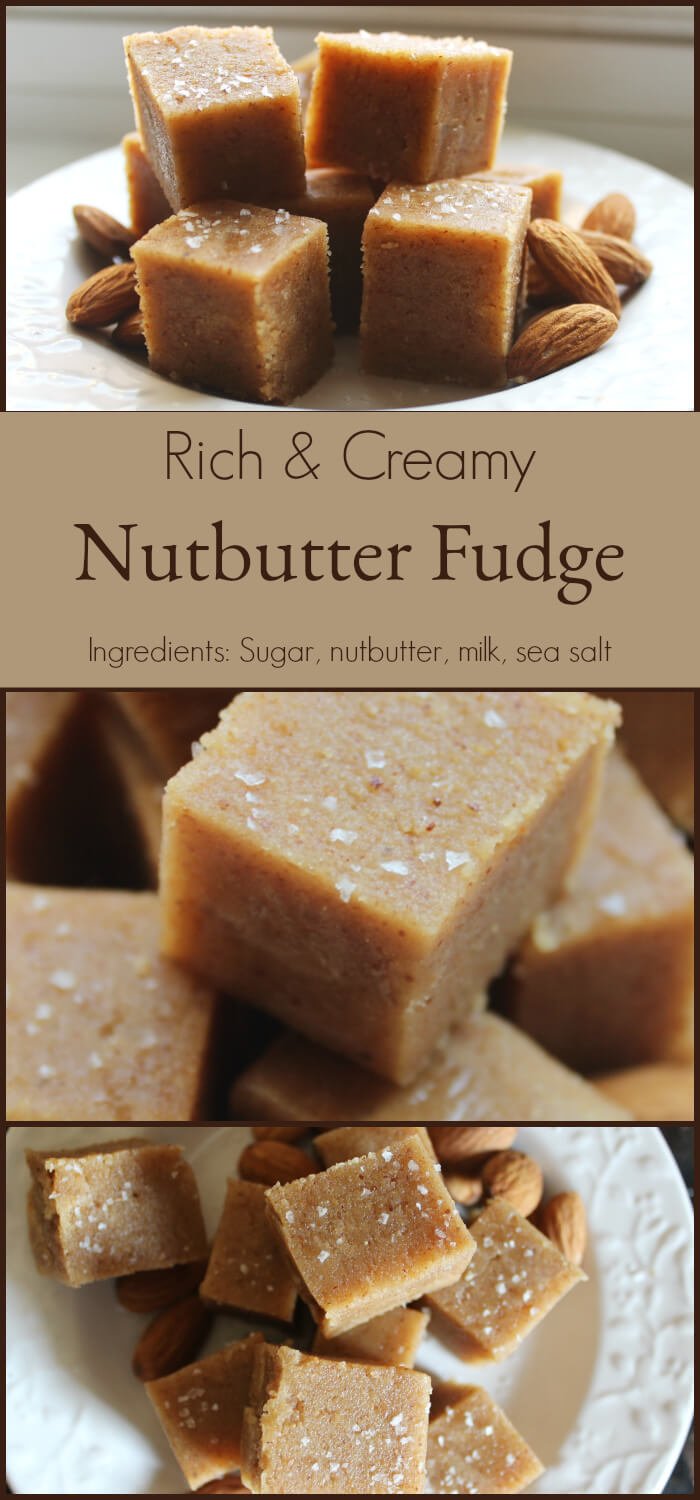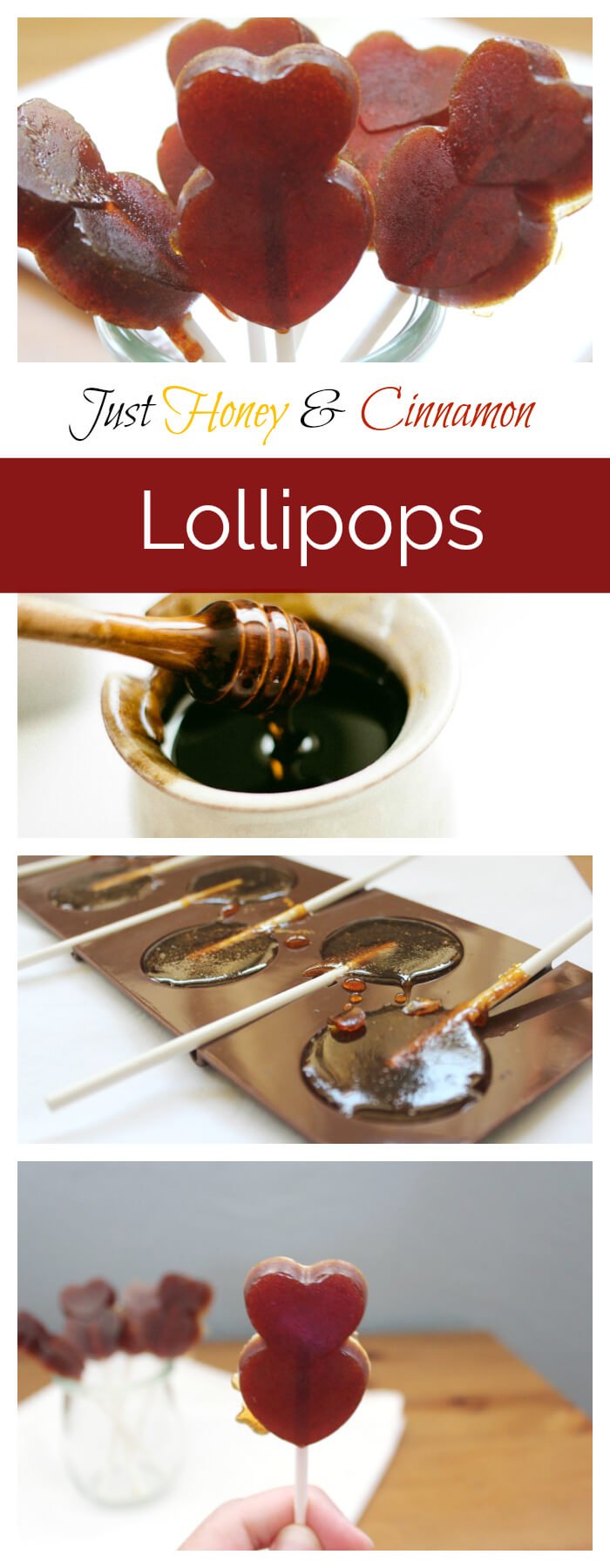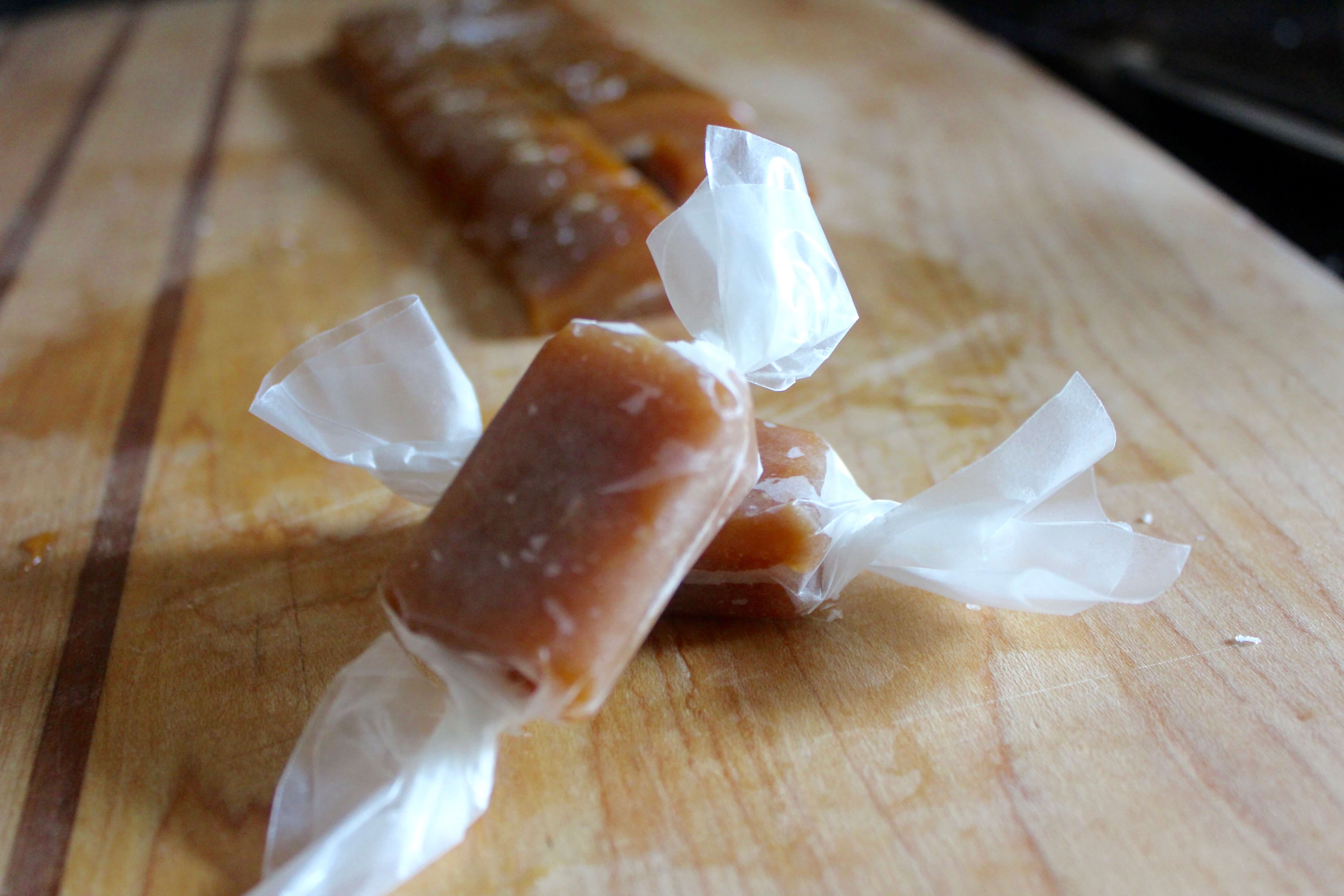
The cool crisp days of fall and winter invite you to try your hand at making caramel apples, chocolate fudge, lollipops, and more. But as you scroll through recipes, you quickly are discouraged by all the fake ingredients in the recipes you find.
We love carrying on the traditions of family recipes, but many of us just aren’t interested in the canned milk, corn syrup, or marshmallow cream. Go back a few more generations, and there are candy recipes without corn syrup… but they may have been lost over time.
Whether it’s for a bake sale, treat plates for the holidays, or to pass down the delicious tradition of making homemade fudge for Christmas or caramel apples for fall, here are delicious candy recipes without all the weirdness.
What is candy?
Making real candy requires heating sugar to the point where it changes consistency. During this process not only the texture is changed, but the flavor is as well.
This simple chemical change allows us to add other ingredients and create delicious concoctions- from hard peppermint lollipops to creamy chewy caramels, to classic marshmallows and rich velvety fudge.
Jump ahead:
What’s wrong with corn syrup?
High Altitude Instructions
Keys to Success with Homemade Candy
Sweeteners Used
Equipment Used
Recipes
Why these ingredients?
The food trend is sweeping back toward real ingredients that you can identify easily. We use pure organic sugar from sugar cane, sticky golden honey, rich sustainably-harvested maple syrup, and lesser known but still minimally processed coconut nectar to replace corn syrup (and its cousin, glucose syrup) that is found in so many recipes.
Back to basics
As corn syrup, marshmallow fluff, sweetened condensed milk, and artificial dyes and colors came into mass market, many home cooks took advantage of these ‘easy’ high technology options and discarded their grandmother’s special candy making methods in favor of using new ingredients.
Now, as we see how these highly processed foods are destroying our health, many of us want to avoid these products.
There also is something to be said for knowing how to produce different candies from simple ingredients found on grocery store shelves like honey, simple white sugar, maple syrup, and real cream.
We are falling back in love with not only the subtle flavors that come from real food, but also the self-sufficiency of knowing that we can make beautiful, delicious, superior-tasting caramel without relying on a can of sweetened condensed milk, fudge without a jar of marshmallow fluff, and lollipops without red dye #40.
We will bring back the real candy tradition with these recipes.![]()
![]()
![]()
![]()
![]()
?
Why is corn syrup in so many candy recipes? What’s wrong with corn syrup?
The chemical makeup of corn syrup helps buffer granulated table sugar from crystalizing back up into grainy clumps. Table sugar is made up of sucrose, fructose, and glucose. The addition of water can dissolve these sugars, but they will be inclined to crystalize back together before we want them to, resulting in a grainy texture.
To make corn syrup, enzymes are applied to the starch from corn (mostly genetically modified corn, unless purchased organic). These enzymes break the long starch molecules into shorter glucose and sucrose molecules, which now tastes sweet due to the shorter molecular structure.
In corn syrup there still are also larger molecules from the starch, which both are not detectible as ‘sweet’ because they are too large for the tongue to detect, and also provide thickness and reduced water content, making corn syrup a different texture than simple sugar dissolved in water.
The high glucose content in corn syrup helps prevent sucrose molecules in table syrup from crystalizing together before we want them to. Glucose is the smallest sugar molecule, and serves to ‘buffer’ between sucrose molecules by fitting easily between them.
At home we can use household ingredients to similarly separate table sugar into glucose and fructose. We do this by making an Inverted Syrup. Inverted Syrup is made by adding a touch of acid (either cream of tartar, which is a byproduct of winemaking, or lemon juice) to sugar and water, which we then heat to ‘thread’ or ‘soft ball’ stage. This Inverted Syrup has the same crystal-buffering properties of corn syrup due to the glucose and fructose being broken apart and stabilized by the heat and acid.
Inverted Syrup isn’t the only way to avoid using corn syrup- the same buffering properties come from maple syrup, coconut nectar, honey, and other ingredients.
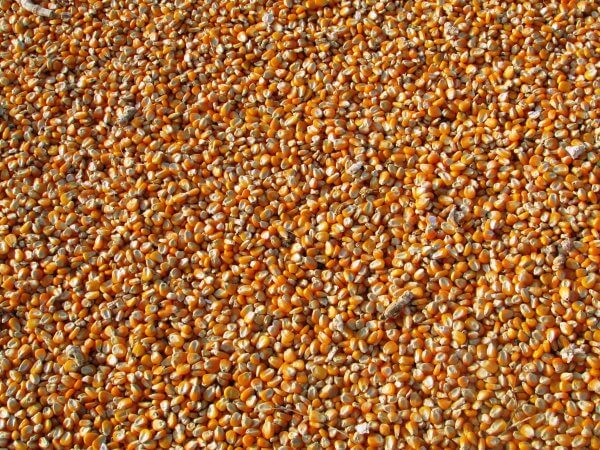
How is Corn Syrup Made?
Corn kernels are trucked into large processing plants, cleaned, and then mixed with warm water and sulfur dioxide to help separate the starch from the other parts of the corn.
The now-softened kernels are then ground, crushed, and spun to use centrifugal force to separate the components into corn oil, fiber, and the pulp that later will be refined into corn starch.
Corn starch is separated from the remaining protein content of the corn, and the corn protein is processed into livestock feed.
Once the corn starch has been isolated, it is combined with weak hydrochloric acid and heated under pressure to start the process of making corn syrup. Alpha amylase is also used to separate out the glucose molecules.
The corn syrup is then filtered and then excess water is evaporated off. This produces corn syrup, sometimes called glucose syrup.
How hard is it to make candy?
Candy, like all cooking, is a combination of art, science, and a little bit of a sixth sense. With a little patience, careful eye on the thermometer, and meticulous adherence to instructions you will produce delicious candy right out the gate.
When making homemade gourmet candies, some of the inconsistencies are part of the charm. And if the sweet concoctions were messed up in some way, it’s likely that they will still be delicious when repurposed.
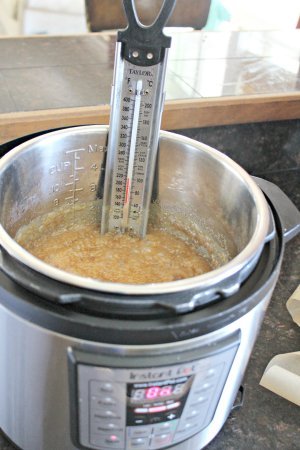
Temperature
A good candy thermometer can be found for about $12, and is a useful investment that will last years and years. A consistent heat source is another important part of making candy- you want all of the candy to get to the same temperature at the same time.
I found that my Instant Pot provides a fantastic even heat source that eliminated my need to stir much at all (this is important to keep our sugar from re-crystalizing before we are ready) and I was able to produce consistent candy every time.
If you aren’t using an Instant Pot, choose a heavy-bottomed pan and place it on a heat source that is the same size as the bottom of the pan. Using a large pot on a small burner, or a small pot on a large burner will both cause uneven heating in your candy.
?
High Altitude Directions
Elevation differences will also make a difference of where your candy reaches the correct temperature. I’m in the mountains in Montana, 4000 feet, and water boils here at 204* F rather than the 212 * F that it boils at at sea level. Because of this, I need to subtract 8 degrees from the recommended temperatures for most recipes.

Why does water boil at lower temperatures the higher you go up in elevation?
Atmospheric pressure, my friends! Did you know that all the air within our atmosphere actually has weight? The lower we are, the more air is piled on top of our head, and on top of our boiling pot of water. This pressure weight down on us, and our boiling candy, is from the weight of the air molecules (nitrogen, oxygen, carbon dioxide, and other gasses).
This weight weighs down on our pot of boiling water (or candy), causing the water to need to be heated higher before the water turns into water vapor. This water vapor being produced is what we see as boiling.
So, less air above us means less pressure on the top of our candy, and the lower the point that water will turn into vapor. This also means that a lower temperature is required for sugar to melt from solid to liquid, and lower temperatures are required to reach the different stages of hard ball, soft crack, hard crack, etc used in candy making.
*All cooking temperatures in this book, as well as your candy thermometer, are calibrated to sea level for consistency.
Don’t be intimidated by this information, unless you live in the mountains, go ahead and try the recipes just as written. If you consistently find you are burning your candy, or it is hard when it should be soft (like caramel) look up your altitude and adjust accordingly.
Alternatively, you can boil water (just water- no salt or anything in it), measure with the candy thermometer you’re using, and use that as your ‘boil’ temperature and follow the chart across.
?
Timing
Timing in some recipes is more flexible than others, but the window between ‘soft ball’ and ‘hard crack’ and ‘burnt!’ can be just moments. Stay near your candy with an eye on the thermometer, especially during your first couple batches, until you get a general sense of how long each stage takes to get to.
Some candy, such as lollipops or candy canes, can be removed from heat and you have a few minutes to add the flavoring. Other candy, such as Maple Candy, needs to be scooped into molds exactly as soon as it is the correct consistency or it will freeze and crumble.
Humidity
The moisture content in the air can affect how candy sets up. For best results, if you live in a humid climate, wait until the humidity is low. Candy making might sound like a great rainy day activity, but the increased humidity will prevent candy from hardening correctly.

Stirring candy as it cooks can cause the sugar to clump back together, resulting in grainy clumps rather than smooth melt-in-your-mouth goodness.
Instructions
Maybe this should have gone first, because it’s the key to making candy that works consistently every time. Follow instructions exactly as written! If it says ‘do not stir’ after a certain step, stirring can cause the sugar crystals that were melting and forming glass-like clear candy to clump back up and form grainy crystals.
If coconut nectar is called for, substituting rice syrup will usually result in a much more hard candy. If you don’t have, or can’t eat, the ingredients as listed- choose another recipe or accept that substitutions may not produce the candy as described and pictured.
Unlike stir fries, roasted vegetables, soups, and salads, there is very little wiggle room in candy recipes, so be prepared to follow the instructions to the letter in order for them to work correctly.
The instructions are simple, but they are all essential to get candy that behaves correctly. If you accidentally skip a step, or misread the instructions, it is likely that your candy will still be yummy, and you can repurpose it into something else.
Colors and Flavors
By using high-quality ingredients we are able to highlight the individual properties and subtle rich flavors of our natural candies. Rather than using overly-processed and tasteless corn syrup, refined white salt, and stale canned milk, we use rich coconut nectar, sea salt that contains trace minerals from the sea, vanilla from real vanilla beans, and high-quality good-tasting cream. These, along with the subtle browning of the sugar in the recipes, provide depth of flavor that doesn’t need to be covered up with artificial ingredients.
?
Sweeteners used in these recipes
Sugar: Pure organic cane sugar is used here. Cane sugar, also called granulated sugar or white sugar, has a sweet neutral taste and is in most of these candy recipes. It contains fructose and glucose bound together into sucrose. Cane Sugar is made by chopping up sugar cane, pureeing and extracting the juice. The juice is then dried, and the molasses (the dark part of sugar) is removed to make white sugar.
Sugar can be refined into white sugar by the use of lime in carbonation or by using sulfur dioxide.
When looking for sugar, look for cane sugar as it is not genetically modified. Choose organic when possible.
Honey: Nectar of the bees, honey is a contains separate glucose and fructose molecules, rather than having them bound together into sucrose like white sugar is. Raw honey also contains trace amounts of pollen, yeast, and enzymes.
Honey is extracted raw from the comb by loading the comb in a drum that is then spun, and the centrifugal force flings the liquid raw honey from the comb. The honey comb is then washed and made into beeswax, which is used in candles, cosmetics, and other applications like furniture polish.
Many beekeepers sell raw honey. On a large scale, honey is pasteurized by heating to 161* F or higher to preserve its shelf life, kill any lingering yeast spores that can encourage fermentation, and reduce the likelihood that the honey crystalizes.
Pasteurization changes the flavor profile, removing the subtle flavors that come from the area of which the honey was obtained (clover honey, orange honey, etc). It also darkens the color.
You can buy raw honey here.
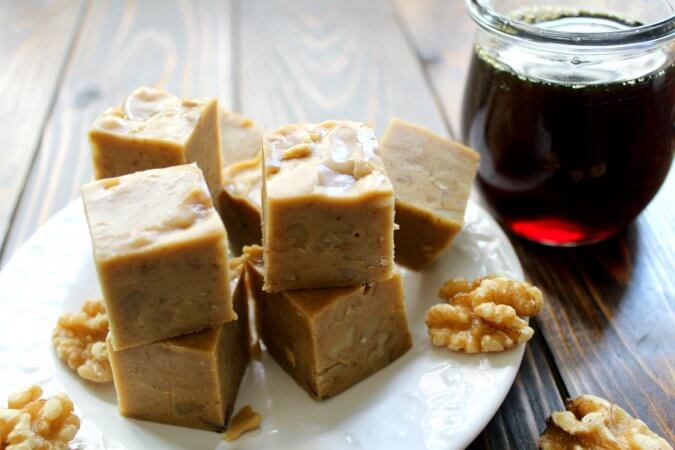
Maple Syrup
Refined from the sap of a sugar maple, maple syrup was first collected by the indigenous people of North America. The sap of the maple trees contain 2-5% sugar, mostly surculose as is in white sugar. Trees start being tapped around 30 years of age, and larger trees can support more than one tap. Each tree gives on average 9-13 gallons of sap per season, at a rate of about 3 gallons a day.
While traditional tapping does not harm the maple trees, and may even make them stronger as they are well cared for, vacuum extraction methods are used to extract more sap on low production years. There is controversy over this method of using a vacuum to extract more sap than would flow from traditional tapping, with concern that it is harmful for the trees long term.
Refining the syrup is a relatively simple process, which started by evaporating off the extra water from the sap, so the sweet syrup remains. ‘Sugar sand’ is filtered out, which isn’t toxic, but leaves a gritty texture in the syrup.
For long term storage, maple syrup needs to be evaporated down to the correct sugar concentration or it will spoil or crystalize.
The amount of reduction needed depends on the amount of sugar that is present in the sap collected. For example, if the sap is only 1.5% sugar, 57 gallons of sap will be required to make 1 gallon of maple syrup. If the sap contains 3.5% sugar, only 25 gallons are needed for one gallon.
Maple syrup is graded right after bottling. Maple syrup is graded by color; the darker the color, the stronger the flavor. ‘Fancy’ is the lightest syrup, A in the middle, and Grade B being the darkest. The sugar content is exactly the same in all, with the darker syrup coming from darker sap that is extracted later in the year.
When choosing maple syrup, choose 100% maple syrup that does not use vacuum extraction when possible. Sourcing directly from the farmer that cares for the trees sustainably is best for you, the trees, and the farmer.
You can buy maple syrup here
Or get a free sample from Thrive Market (order coconut nectar while you’re there too).
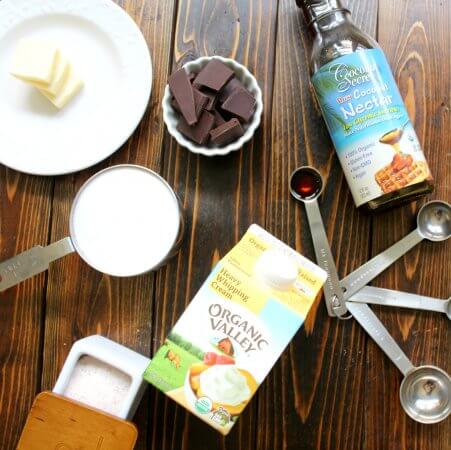
Coconut Nectar
Though coconut nectar has been traditionally harvested for centuries, it just now is catching on as a natural sweetener commercially.
Tapped from the coconut palm tree, coconut nectar is claimed from the coconut blossoms in a similar way that maple syrup is claimed from the trunk of the maple tree. When the blossoms at the top of the coconut tree are mature, they are cut along the stem end, and the sweet milky-white ‘sap’ or nectar is removed.
This nectar is turned into coconut vodka, palm wine, coconut aminos, coconut vinegar, and yes, coconut nectar that is sold commercially. Sweet coming out of the flower, coconut nectar does not require as much reduction to create a sweet syrupy product.
Coconut nectar is not harmful to the coconut trees, but because the nectar is drained out of the blossoms, those blossoms never mature into coconuts. A tap in a coconut tree can last for more than 10 years, which is beneficial for coconut trees around houses and walkways, as the heavy fast-falling coconuts can harm anything they fall on.
Like maple syrup and cane sugar, the primarily sugar molecules in coconut sugar are sucrose, followed by fructose and glucose. This minimally-processed product does have quite a few trace minerals present as well: Potassium, iron, vitamin C, and other trace minerals.
Does coconut nectar taste like coconut? No, not at all. The unique coconut taste is distinctly from the coconut fruit themselves. Just like apple blossoms don’t necessarily smell (or taste, I suppose) like apples, the blossoms that produce coconuts do not have that same smell or taste.
You can buy coconut nectar here.
Or if you sign up with Thrive Market it’s nearly half off (I bought it here after trying it from my local health food store and seeing how helpful it is for candy)
Is Rice Syrup Any Better Than Corn Syrup?
Similarly to corn syrup, rice starch is turned into sweet rice syrup by exposing the long starchy chains present in brown rice to enzymes, heat, and a mild acid solution and then evaporated into a syrup. The sugar profile is different from corn syrup, rice syrup still digests more like a starch than a simple sugar. Rice syrup contains 45% maltose, 3% glucose, and 52% maltotriose.
There is controversy with arsenic in rice syrup, especially when used for infants or toddlers such as in infant formula. Rice is naturally high in arsenic, and the concentrated nature of rice syrup increases the amount of arsenic consumed.
?
Equipment Used
You will see there isn’t a lot of specialty equipment used in this book. Many of you will have all of this already, perhaps needing to purchase a candy thermometer only.
- Instant Pot or Heavy-Bottomed Stock Pot
- Medium Saucepan (caramels)
- Double Boiler or Steamer Insert plus a small heat-proof bowl to turn your Instant Pot into a double boiler (chocolate chips)
- Stand mixer (marshmallows, divinity, maple fudge, meringues)
- Candy Thermometer
- Parchment Paper
- 8×8 pan or Silicone 8×8 pan (size does not need to be exact) (caramels)
- 9×13 pan (marshmallows)
- Loaf pan (fudges)
- Baking Sheet (divinity, meringues, caramel apples)
- Lollipop molds and paper sticks (lollipops, sticks for caramel apples)
- Cellophane bags or waxed paper to wrap candy individually
- Measuring Cups
- Measuring Spoons
Candy Thermometer
You can use the ‘drop the candy in cold water method’ of seeing what stage the candy is at, but I have found that a candy thermometer makes candy making more accurate and the finished product is better. By the time I figure out whether my candy is at ‘hard ball’ or ‘soft crack’ stage, either it has cooled back down (and possibly recrystallized due to the temperamental nature of candy) or it has gone on to the next stage if I left it on the heat. A candy thermometer is a worthwhile investment if you plan on giving candy making a try.
Stand Mixer
A stand mixer is helpful in a handful of the recipes, but you can make do with a handheld mixer- just be prepared to use it for 10-12 minutes at a time, and you’ll need a helper to pour in the hot sugar mixture while you use the handheld mixer as well.
Why the Instant Pot?
We use the even heat of the Instant Pot in the videos associated with these recipes, as I have found it is the easiest way to consistently make candy in my home kitchen. If you have an Instant Pot, or another pressure cooker with a saute function, I encourage you to use this fantastic piece of equipment to heat your candy!
It’s not under pressure…
Yes, we use a pressure cooker in these recipes, but we DO NOT use the pressure setting! You may be confused, and wondering when to put the lid on in these recipes, or if they take longer on the stovetop than they do in the Instant Pot.
This is a common question, and since we are using the sauté feature on the Instant Pot, we don’t put the lid on, and we don’t have to accommodate for a shorter cooking time.
We’re using the Instant Pot here because it is a wonderfully easy-to-use even heat source. Also, the pot is easy to clean, as it is light weight and uses less room in the dishwasher.
If you don’t have an Instant Pot, directions have been provided for using a 5-6 quart heavy saucepan or small stock pot.
?
Recipes!
I have all the classic recipes you love in my soon-to-be-released book Candy Making Without Corn Syrup, and I’ll be sharing a few here as the holiday season approaches.
To get you started, here are Dairy-Free Salted Caramels that you’re sure to love.
Check back for the following that will be posted on the blog:
- Bite-Sized Caramel Apples
- Soft Caramels with Sea Salt
- Honey-Cinnamon Lollipops
- Nutbutter Fudge
- Honey-Sweetened Chocolate Chips (now!)
- Gluten-Free Meringues
Or Buy Candy Making Without Corn Syrup e-book right here!
In Candymaking Without Corn Syrup we make:
- Rich Chocolate Classic Fudge (Egg-Free, Corn-Free, Nuts Optional, Gluten-Free)
- Nutbutter Fudge (Egg-Free, Corn-Free, Gluten-Free)
- Pecan Pie Candy (Egg-Free, Corn-Free, Dairy Free, GAPS, Gluten-Free)
- Honey Cinnamon Lollipops (Egg-Free, Corn-Free, Nut-Free, Dairy Free, GAPS, Gluten-Free)
- Lemon Drop Lollipops (Egg-Free, Corn-Free, Nut-Free, Dairy Free, Gluten-Free)
- Divinity with Pecans (Corn-Free, Nuts Optional, Dairy Free, Gluten-Free)
- Pure Maple Melts (Egg-Free, Corn-Free, Nut-Free, Dairy Free, Gluten-Free)
- Maple Walnut Fudge (Egg-Free, Corn-Free, Nuts Optional, Gluten-Free)
- Soft Caramels with Sea Salt (Egg-Free, Corn-Free, Nut-Free, Gluten-Free)
- Dairy-Free Salted Caramels (Egg-Free, Corn-Free, Nut-Free, Dairy Free, Gluten-Free)
- Caramel Sauce (Egg-Free, Corn-Free, Nut-Free, Dairy Optional, Gluten-Free)
- Homemade Chocolate Chips(Egg-Free, Corn-Free, Nut-Free, Dairy Free, Gluten-Free)
- Honey-Sweetened Chocolate Chips (Egg-Free, Corn-Free, Nut-Free, Dairy Free, GAPS, Gluten-Free)
- English Toffee (Egg-Free, Corn-Free, Nut Optional, Gluten-Free)
- Maple Vanilla Marshmallows (Egg-Free, Corn-Free, Nut-Free, Dairy Free, Gluten-Free)
- Honey-Sweetened Marshmallows (Egg-Free, Corn-Free, Nut-Free, Dairy Free, GAPS, Gluten-Free)
- Meringue Cookies (Corn-Free, Nut-Free, Dairy Free, Gluten-Free)
Use the above basic recipes, plus the recipe variations, to make:
- Nutbutter/Chocolate Fudge Swirls
- Chocolate-dipped Marshmallows
- Caramel Apple Pops
- Peppermint Fudge
- Peppermint Lollipops
- & more!
Learn how to heal leaky gut

60-page ebook of all my best GAPS Diet (Gut and Psychology Syndrome) articles all in one place.

